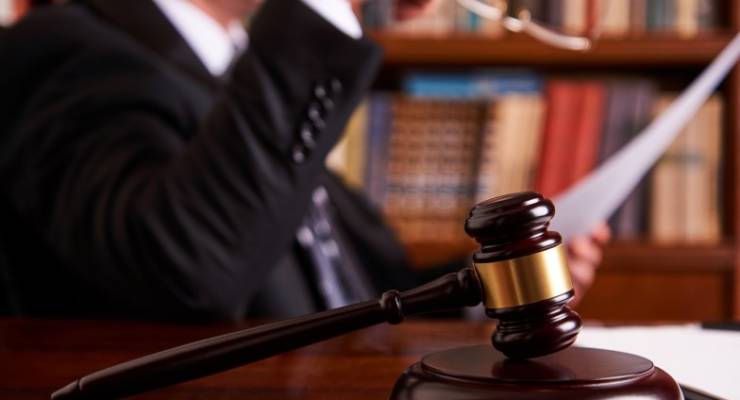
The legal profession in Australia is arguably more diverse than at any other point in its history. In 2016, the NSW Law Society found there were equal numbers of male and female lawyers for the first time ever, and that women accounted for 60% of new graduates. But, while statistics like this place a glossy veneer on the profession, the picture looks very different when the judiciary is placed under the microscope.
Last week, Crikey pointed out that a significant number of Australia’s top judges were products of an elite private school-sandstone university pipeline. The institution looks similarly homogeneous when the racial and gender split among judges is examined. The pool of Australian lawyers may slowly be getting more diverse, but the top tiers of the judiciary remain overwhelmingly white and male.
The boys’ club
Until Mary Gaudron’s appointment in 1987, no woman had sat on the High Court. In the 30 years since, the Court has come a long way, and four more female judges have been appointed. Currently, Australia has its first female Chief Justice in Susan Kiefel. She is joined on the seven-person bench by Virginia Bell and Michelle Gordon, meaning the Court has more women than ever.
But the numbers across other superior courts are less positive. Of the 47 judges of the Federal Court of Australia, 34 are men (72%). Among the 56 judges of the NSW Supreme Court, 43 are men (76%). The percentages of male judges on the Supreme Courts of Victoria and Queensland are similar (73% and 67% respectively).
The underrepresentation of female judges reflects structural inequality at the top tiers of the legal profession and barriers women face when climbing the professional ranks. Judges are generally picked from the cream of the barristerial crop, where women are already chronically underrepresented. Recent data from the NSW Bar Association shows 77% of barristers, and 88% of Senior Counsel are men. Victoria performs better on this front — women now make up 29% of barristers there.
A Law Council of Australia report into attrition rates found many women surveyed expressed frustration at unconscious biases, poor work-life balance, and a lack of flexible working arrangements. Writing in The Australian, Ainslie van Onselen argues that “sexist briefing practices (whether conscious or unconscious), Bar culture, quality of briefs and inherent bias” all serve to lock women out of top positions.
The unbearable whiteness of being a judge
Although there has been little existing research on the exact racial, ethnic and cultural composition of the judiciary, the institution has historically been ethnically homogeneous.
The contours of who constitutes a person of colour in Australia are fuzzy and contested. Still, most judges in Australia appear to be from white, Anglo, English-speaking backgrounds. All High Court judges, past and present, have been white. Meanwhile, the overwhelming majority of current Federal Court judges are white, with the exception of Darryl Rangiah, who was born in South Africa. Mordy Bromberg, who arrived in Melbourne from Israel aged eight, not speaking a word of English, is another outlier on the Federal Court.
The overwhelming whiteness of the judiciary puts it out of step with the changing demography of Australian society at large. And as the legal profession itself begins to diversify, the judiciary’s whiteness becomes particularly pronounced. According to the Law Society of NSW, 10% of solicitors in the state were born in Asia.
In 2015, analysis from the Asian Australian Lawyers’ Association found that, though Asian Australians make up approximately 10% of the population, they accounted for less than 1% of the judiciary, 2% of barristers and 3% of partners.
The limits of diversity
The legal profession is slowly waking up to the need for greater diversity. Earlier this year, some of the country’s biggest firms undertook a landmark survey on cultural diversity. The Law Council of Australia, meanwhile, has created a diversity and equality charter, as well as an equitable briefing policy to improve career progression for female barristers.
But while firms and professional bodies talk a big game about inclusion, little attention has been paid to the bench, which remains behind the curve.
In the UK, Supreme Court President Lady Hale (who was, until recently, the only woman on the bench), has spoken of the importance of diversifying the pool of judges, and called for affirmative action to bring more women and ethnic minorities to the judicial fold.
There doesn’t appear to be similar support for affirmative action in Australia. Kiefel has remained relatively quiet on the topic, and while her predecessor Robert French bemoaned the glacial pace of cultural change in the legal profession, he argued it would be “very difficult” to impose “coercive or prescriptive rules” to improve female representation.
For French, “cultural change” was the preferable mechanism for diversifying the profession. But while legal cultural is slowly changing, the pinnacle of the profession remains largely untouched.








I’d be pretty horrified if judges were assigned cases based on their ethnicity (or “whiteness” as the author seems to prefer using).
Are we going to get weekly lectures about judicial ethnicity from this upstart ? “Last week, Crikey pointed out that…” That would be last week you pointed it out Kishor and today you introduced the awful Americanism “person of colour.”
Diversity tokenism and positive discrimination is fine where any damage can be managed but please leave it out of areas that affect the greater public good.
There are all sorts of problems with judicial appointments as other experienced writers here note. Take a look at the AAT. Whiteness and maleness are issues but well down the list and I have my doubts about your facts.
I dunno, can you write something as gormless as ‘picked from the cream of the barristerial crop’ and still call yourself a journalist?
What about ‘The contours of who constitutes a person of colour in Australia are fuzzy and contested’?
Back to the intern’s coop for this fledgling.
If this is intended to make a case for more ID politics it would need to show … what’s the word? … evidence for the contention.
Yet another dollop of cut’n’paste, not a word of original thought, research or analysis – recitation is not advocacy.
Anyone up for a joke on quality briefs aiding ones ascension to becoming a judge? I’d be streets ahead of hubby with his motheaten threadbare jocks
..umm, are you not somewhat remiss in your duty to keep hubby’s knickers in good fettle?
What bloke buys his own underpants?